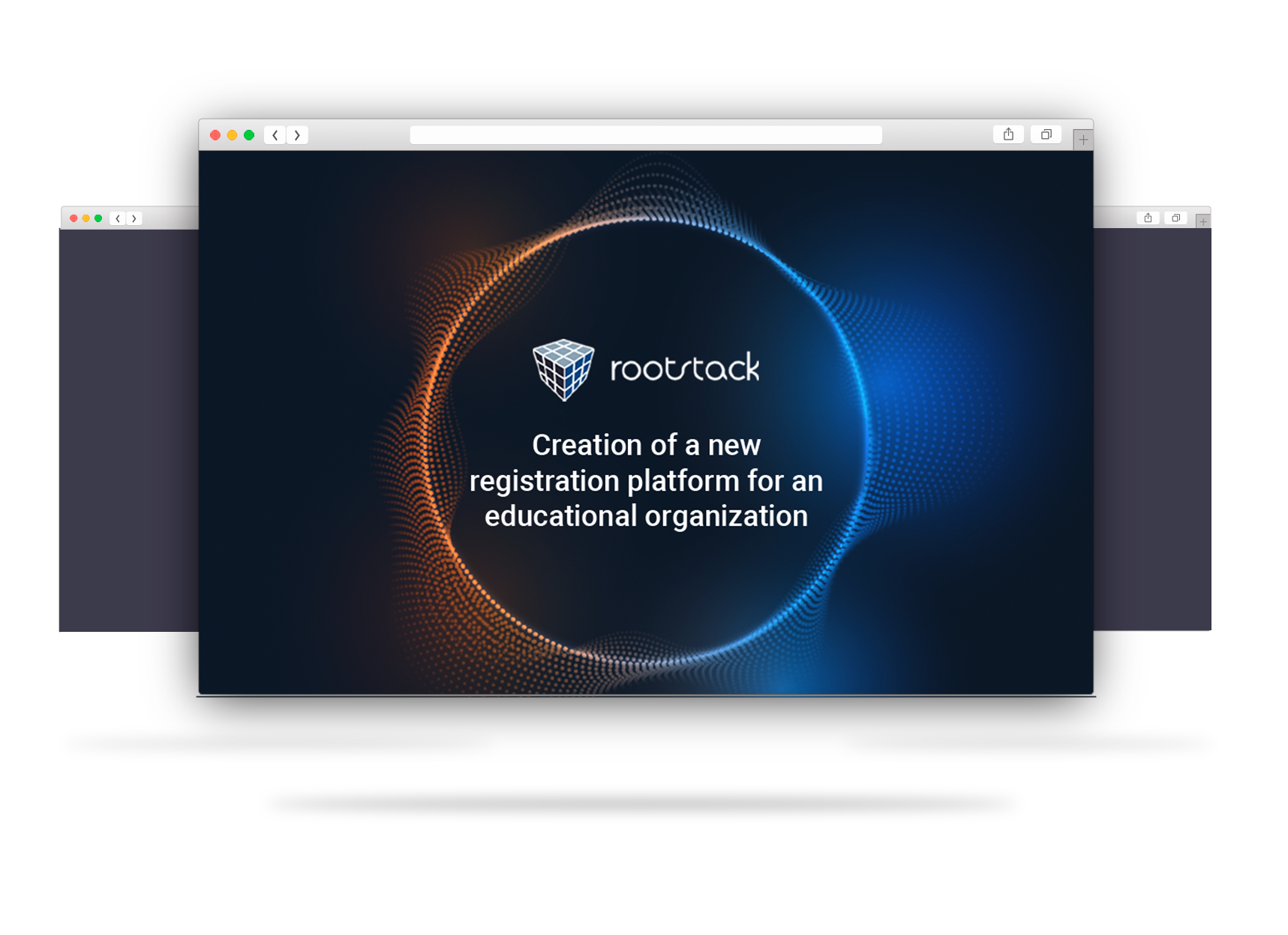Challenge
The organization needed a new platform to integrate it into its website, where its users could register, but a form was needed that would only work when the user or visitor entered their data.
Our solution
Rootstack offers a team of expert software engineers who are working on creating a new platform where users of this organization can register. The goal is to build a second portal that works on demand: every time someone logs in it is activated and then it is inactive again.
The engineering team worked hand in hand with the company collaborators, thus being able to meet the needs head-on and leave nothing aside. One of the first tasks that was worked on was to make both platforms, the old and the new, work at the same time and thus not lose any possible records.

One of the goals was to tear down the first version and leave only the second version with all the improvements. In addition to achieving the creation of a lightweight portal, easy to make changes and that allows Business Intelligence.
Implementation of the frontend and backend of the application, creation of a registration form, creation of basic components, integration of SSO solutions with Snowflake, AWS, and Azure, and definition of groups in Azure AD for the management of roles and permissions.
Other tasks carried out by the Rootstack team in the project were:
- Configuring Windows Autopilot to enroll computers in the Intune domain
- Development of a process for the registration of mobile devices also under Intune
- Development of data logic at the backend level
- Collaborate with the frontend and DevOps team to integrate the developments and achieve the established development objectives
- Construction of the data infrastructure that the client needs for his new database
- Development of new modules using React and AWS technologies in the new 2.0 portal.
- Error correction.
- Continuous integration, using AWS infrastructure as code, pending the deployment of the entire project infrastructure with specific commands, which are easy to replicate if necessary.
- Realization of pipelines and support to the client's AWS infrastructure
- Support with the migration and creation of the data lake and data warehouse
- Development of the ETL and strategies to move the data
- Development of the application, validating the files uploaded by users, and exposing the data of said files.
- UX Process: Research, Definition, and Ideation. Once this phase of the project is finished, the tasks in charge will correspond to the UI process: Ideation, Prototyping, and Testing.
- Creation of new components: dynamic toolbar with icons
- Creation of animations to use in the application.
The team consisted of two data analysts, four developers, a UX designer, and a DevOps. The scrum methodology was used.
DevOps Service
In this project, the DevOps engineer worked with AWS, and was in charge of the pipeline and supporting the client's AWS infrastructure. Using AWS for DevOps provides a scalable, flexible, cost-effective, reliable, and secure infrastructure platform that allows you to automate and optimize your DevOps processes, accelerate software delivery, and improve collaboration and innovation within your organization.
Technologies
For this project, the team of engineers and developers worked with multiple technologies due to its large scale. AWS glue, AWS athena, Snowflake, Postgres, AWS lambda, AWS S3, AWS SQS, AWS SNS, Pyspark, Python, SQL, and Git were used.

The AWS cloud computing platform allowed our team to have multiple tools for any need that the project presented as they were working, thus avoiding any setback that could delay the delivery or execution of the new platform.

